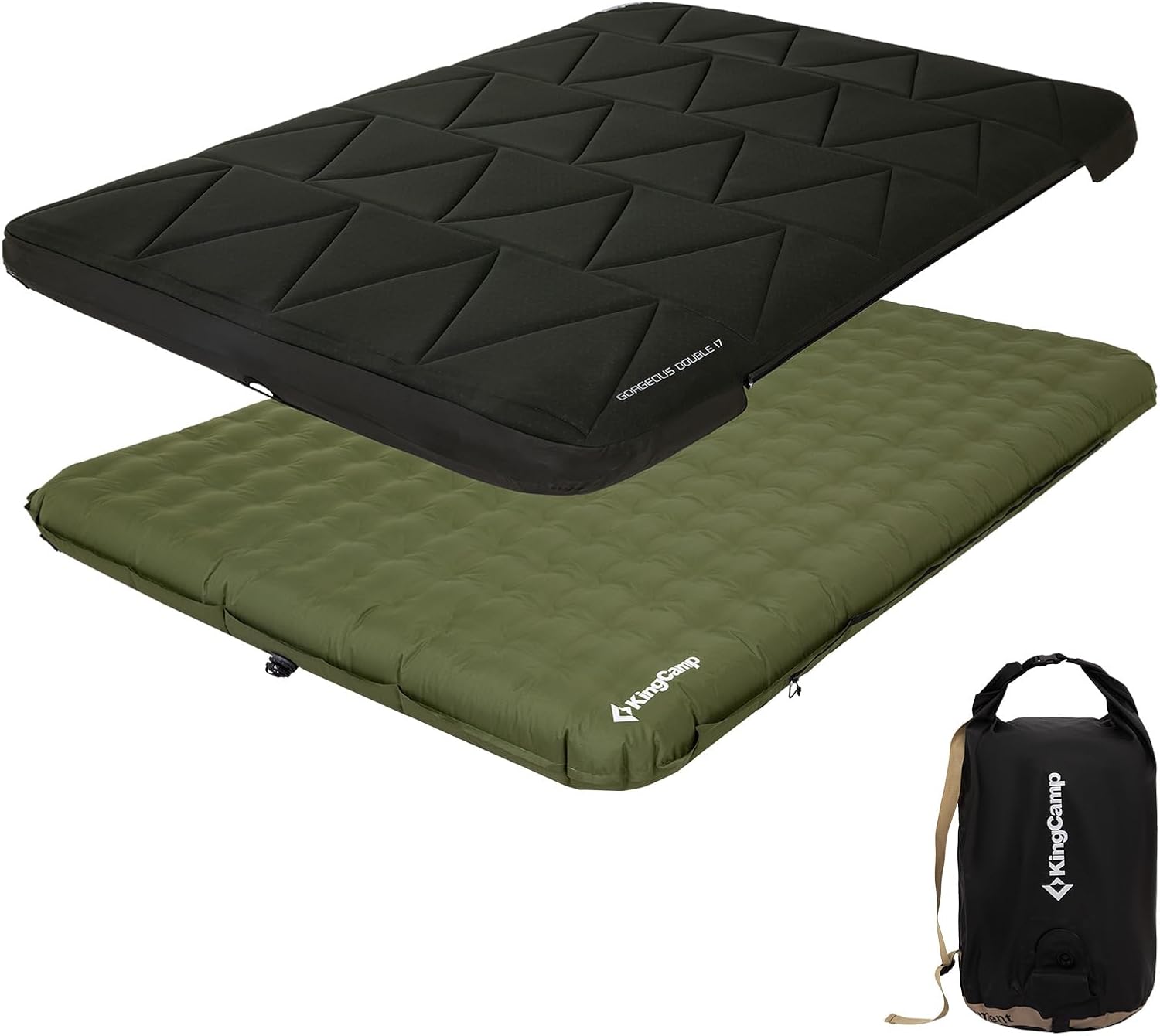Have you ever thought about how a self-inflating sleeping pad works? It might seem like a mystery, but understanding the mechanics behind it can help you choose the right one for your adventures. Let’s unravel the fascinating world of self-inflating sleeping pads together.
The Basics of Self-Inflating Sleeping Pads
Self-inflating sleeping pads are a popular choice for campers and backpackers due to their convenience and comfort. You might be wondering, what makes them different from regular sleeping pads? Unlike traditional options that require manual inflation, self-inflating pads harness the power of foam and air to create a cozy sleeping surface.
Construction of Self-Inflating Sleeping Pads
These pads typically consist of two main components: an open-cell foam core and a valve system. When the valve is opened, the foam expands, drawing in air and inflating the pad automatically. Here’s a closer look at each component:
| Component | Description |
|---|---|
| Open-cell foam | This material allows air to flow in and out while providing insulation and cushioning. |
| Valve system | This is the mechanism that controls airflow into and out of the pad. |
The interplay between these two components makes self-inflating pads extremely user-friendly and effective.
How Does the Self-Inflation Process Work?
You might be curious about how exactly the inflation process transpires. It all starts when you roll out the pad and open the valve. The foam inside the pad expands, creating a vacuum that pulls air in. This process roughly takes just a few minutes. Here’s a step-by-step breakdown:
- Unroll the Pad: Lay the pad flat on the ground or inside your tent.
- Open the Valve: This allows air to flow freely into the pad.
- Foam Expansion: As the foam expands, it creates pockets that fill with air, thereby inflating the pad.
- Final Adjustments: For added firmness, you can blow a little air into the pad before closing the valve.
The Role of Foam in Self-Inflating Pads
The foam used in self-inflating sleeping pads is crucial in determining comfort and insulation. Open-cell foam allows air to circulate, creating a plush feel while also trapping heat. Here’s a bit of info about the types of foam commonly used:
| Foam Type | Characteristics |
|---|---|
| Open-cell foam | Offers excellent insulation and comfort, but can absorb moisture. |
| Closed-cell foam | Denser and more durable, provides insulation but can be less comfortable. |
When selecting a sleeping pad, consider the type of foam depending on your camping conditions.
Advantages of Using Self-Inflating Sleeping Pads
Choosing a self-inflating sleeping pad comes with numerous benefits. After all, your comfort during sleep can significantly impact your outdoor experience. Here are some advantages you’ll appreciate:
- Ease of Use: With self-inflating technology, you won’t have to blow up your pad manually, making it easy for anyone to use.
- Comfort: The foam provides pressure relief and insulation, ensuring a restful sleep even on rocky terrain.
- Lightweight and Compact: Many models are designed to pack down small, making them perfect for backpacking.
Better Insulation
Insulation is a vital component in outdoor gear. Self-inflating sleeping pads generally offer better insulation than regular air pads due to the foam’s properties. They minimize heat loss during chilly nights, which means you can stay warm while you sleep soundly.
How to Properly Maintain Your Self-Inflating Sleeping Pad
To get the most out of your investment, maintaining your self-inflating pad is essential. Here are some easy steps you can follow to keep your pad in great shape:
Cleaning Your Sleeping Pad
Cleaning your pad regularly will prolong its life and keep it fresh. Here’s how to do it:
- Surface Cleaning: Wipe down with a damp cloth and mild soap after each trip.
- Deep Cleaning: Inflate the pad partially and scrub with a soft sponge and soap solution. Rinse and air dry.
Storing Your Pad
Proper storage can also significantly influence the longevity of your sleeping pad. Here are some tips:
- Keep it Rolled: When not in use, store it rolled rather than compressed. This preserves the foam’s shape.
- Store in a Cool, Dry Place: Avoid tight spaces where it can become crushed or damaged.
Repairing Your Sleeping Pad
Accidents happen, and knowing how to repair your pad can save your camping trip. In the event of a puncture or leak, a simple patch kit can work wonders. Always carry a patch kit designed for sleeping pads in your camping gear.
Choosing the Right Self-Inflating Sleeping Pad
Nothing beats the quality sleep that a good sleeping pad provides, especially after a long day of hiking. When selecting the right self-inflating sleeping pad for your needs, consider the following factors:
Thickness and R-Value
The thickness of the pad affects both comfort and insulation. The R-value measures the pad’s ability to resist heat flow, which is crucial for colder environments. Here’s a simplified table to guide you:
| Thickness | Application | R-Value Range |
|---|---|---|
| 1-2 inches | Lightweight and compact for summer trips | 1-2 |
| 2-3 inches | Versatile for most conditions | 2-4 |
| 3-4 inches | Ideal for winter camping or extra insulation | 4-6 |
Find the right balance based on the seasons you’ll be camping in.
Weight
If you’re planning on backpacking, you probably want something lightweight. Look for pads that provide comfort without adding too much weight to your pack.
Price
Self-inflating sleeping pads come in varied price ranges. It’s wise to set a budget but remember that investing in a higher-quality pad can yield better durability and comfort long-term.
Size
Lastly, choose a pad size that suits you. Most sleeping pads come in regular, long, and wide options. Make sure to select a size that matches your sleeping habits for the best experience.
Common Misconceptions About Self-Inflating Sleeping Pads
It’s easy to see how misunderstandings can arise about self-inflating sleeping pads. Let’s clear the air on some common misconceptions:
Always Fully Inflate?
A common myth is that self-inflating pads should be fully inflated to be effective. In reality, these pads work best when you allow them to inflate partially on their own, combined with a few extra puffs of air to suit your firmness preference.
Heavy Equals Better Quality?
Not necessarily. While heavier materials can sometimes indicate durability, many lightweight options provide excellent performance without the bulk. Consider both weight and comfort during your selection.
They Are Too Expensive
While high-end options exist, budget-friendly models are available that deliver good performance. Don’t let price deter you from enjoying a good night’s sleep outdoors.
Final Thoughts on Self-Inflating Sleeping Pads
As you plan your next outdoor adventures, understanding how self-inflating sleeping pads work can empower you to make informed choices for your sleeping gear. From construction to care, every aspect plays a role in ensuring you get the best experience.
Whether you’re hiking through the wilderness or camping with loved ones, a good night’s sleep will recharge you for whatever comes next. Consider your comfort, the conditions you will face, and your budget, and you’ll find a pad that fits your needs perfectly.
So next time you unroll your self-inflating pad, you can appreciate not just its convenience, but also the clever engineering that goes into making your camping experience more enjoyable.
With this knowledge in hand, you’re now well-equipped to select, care for, and enjoy your self-inflating sleeping pad to the fullest. Happy camping!
Looking to purchase a self-inflating sleeping pad? Check out our top pick https://tentsonthego.com/kingcamp-self-inflating-sleeping-pad-review/



